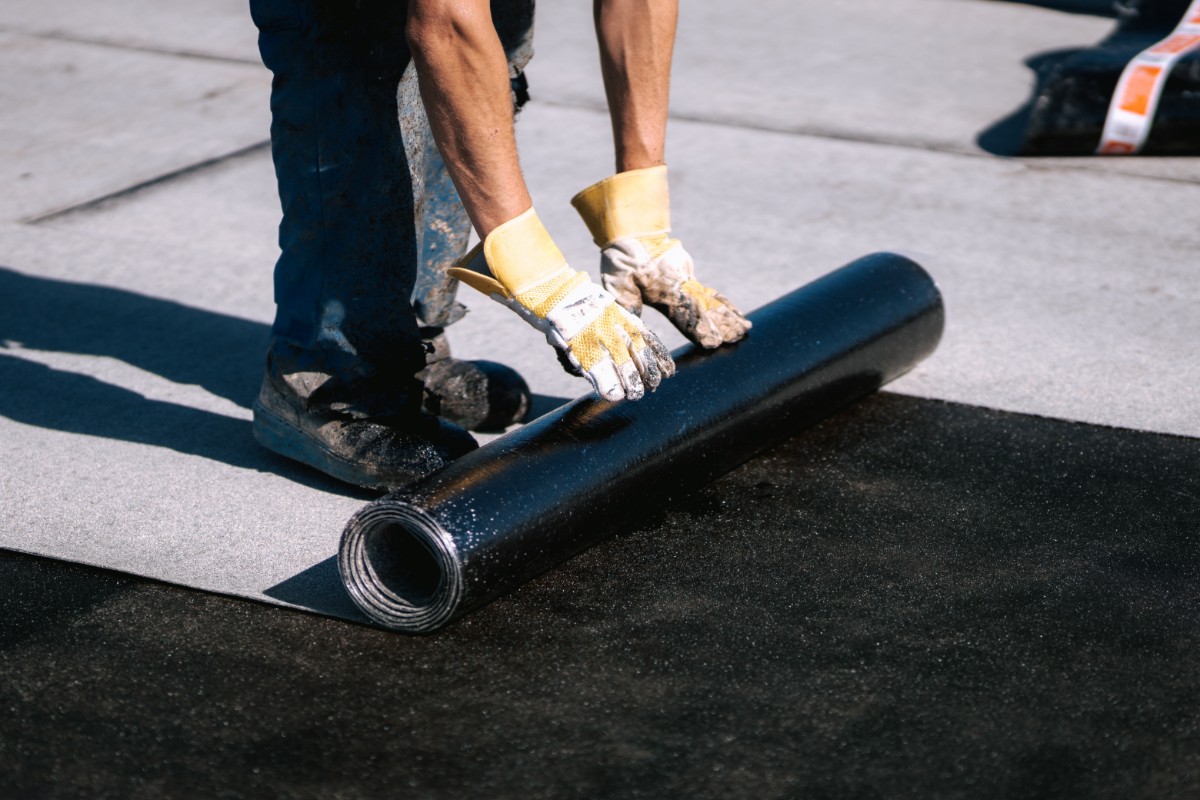A roof is one of the most important parts of a home. It protects the home from the elements, such as rain, snow, and wind.
However, there is really no such thing as a leakproof roof. All roofing materials deteriorate over time or can be damaged by wind, heavy rains, snow, or falling debris. Since even a small amount of water can cause damage to the home, waterproofing can be a useful step in helping your roof last as long as possible
Water Can Cause Serious Damage
Water damage can occur when water enters the home through cracks or gaps in the roof.
One of the most insidious problems associated with water intrusion is the damage it can inflict on various parts of your home. When water seeps into your roof, it can deteriorate the underlayment – a layer of protection placed under the roof covering that acts as a secondary barrier against moisture. Over time, this can cause the underlayment to rot, drastically reducing its effectiveness.
The decking, generally made of wood or plywood, isn’t immune to water’s harmful effects either. Continuous exposure to moisture can cause the decking to warp, buckle, or rot, thus compromising the stability of your entire roof structure.
Water can also infiltrate the roof structure itself, leading to damage to the rafters, trusses, and joists. This structural damage can cause sagging and may eventually necessitate significant roof repair or replacement.
Beyond the roof, water intrusion can lead to a multitude of problems inside the home. Moisture can prompt the growth of mold and mildew, potentially causing health problems for the inhabitants. It can damage insulation, resulting in higher energy costs due to heat loss. Water can also stain ceilings, damage paint and plaster, and even lead to electrical issues. Thus, water damage is not just a roof problem, but a potential threat to the whole house.

How Does Water Get In?
Water can get through even a very small hole or crack in a roof because of the force of gravity. Even a small amount of water can exert a lot of force, and over time, it can slowly seep through even the smallest of cracks.
In addition, water can also get through a roof through capillary action. Capillary action is the ability of water to move up through narrow spaces against the force of gravity. This is caused by the water molecules sticking to each other and to the surface of the material.
Checking Your Roof for Leaks
It’s important to check your roof for leaks regularly. Here are some tips on how to check your roof for leaks:
- Inspect your roof after a storm. This is the best time to check for leaks, as the water will have highlighted any areas where there is a problem. Look for wet spots on the ceiling, walls, or attic. You may also see water stains or mold growth.
- Go up into your attic. This is where you can get a closer look at the roof and the underside of the shingles. Look for any signs of damage, such as missing or cracked shingles, loose flashing, or water stains.
- Use a flashlight. This can help you to see into dark areas of the attic and look for signs of a leak.
- Listen for dripping water. If you hear water dripping, it’s a good indication that there is a leak.
- Check the gutters and downspouts. Make sure that they are clear of debris and that the water is flowing freely.
If you find any signs of a leak, it’s important to fix it as soon as possible to prevent further damage.You can either fix the leak yourself or find a professional roofing company near you.
Here are some additional tips for checking your roof for leaks:
- Do the inspection during the day. This will give you the best light to see any problems.
- Be careful when going up into the attic. There may be loose or damaged materials that could fall.
- If you find a leak, don’t try to fix it yourself if you’re not comfortable doing so. Hire a professional roofer to repair the leak.
Waterproofing Your Roof

There are a few different ways to waterproof a roof. The most common method is to use a liquid-applied membrane, much like a waterproofing paint. This type of membrane is applied to the roof and forms a barrier that prevents water from seeping through. Liquid-applied membranes are available in a variety of materials, including elastomeric coatings, rubberized asphalt, and coal tar.
Another method of waterproofing a roof is to use a sheet membrane. This type of membrane is installed over the roof and overlaps to create a watertight seal. Sheet membranes are made from materials such as EPDM rubber, PVC, and TPO.
The best method of waterproofing a roof will depend on the type of roof and the climate. For example, liquid-applied membranes are a good choice for roofs that are exposed to a lot of moisture, while sheet membranes are a good choice for roofs that are exposed to extreme weather conditions.
Waterproofing Different Types of Roofs
Different types of roofs require different methods of waterproofing. Here are some tips for waterproofing specific types of roofs:
Asphalt/Fiberglass Shingles
Asphalt or fiberglass shingle roofs can be easily waterproofed with a liquid-applied membrane. The best time to apply the membrane is when the roof is first installed, as this allows for a more uniform application and will also extend the life of your shingles. If you are applying a liquid-applied membrane after your roof has already been installed, be sure to clean off any debris or dirt that may have accumulated on the surface before applying the coating.
Tile and Clay Roofs
Tile and clay roofs require a slightly different waterproofing technique. To waterproof these types of roofs, you should first apply an acrylic sealant to the exposed areas of the tile or terracotta. Once this has been done, you can then apply a liquid-applied membrane to further reinforce the waterproofing.
Metal Roofs
Metal roofs require a different type of coating, as traditional liquid-applied membranes do not adhere well to metal surfaces. To waterproof a metal roof, you should use an acrylic elastomeric coating that has been specifically formulated for metal roofs. This type of coating is designed to be more flexible and better able to adhere to metal surfaces than traditional liquid-applied membranes.
Concrete Roofs
Concrete roofs can be waterproofed with a variety of methods, including liquid-applied membranes, sheet membranes, and coatings. The best method will depend on the condition of the roof and the desired level of waterproofing.
Waterproofing cost depends on a variety of factors, including the type and size of the roof and the choice of waterproofing.
The Best Roofing Company in Florida
Stronghold Roofing & Solar is the choice for any roofing services in Sarasota, Lakeland, and Georgia. We are committed to making roofing stress-free and easy, so contact us for a free roofing estimate.
FAQs – Waterproofing Your Roof
What is the best way to waterproof a roof?
The best way to waterproof your roof will depend on the type of roof and climate. Liquid-applied membranes are a good choice for roofs that are exposed to a lot of moisture, while sheet membranes are a good choice for roofs that are exposed to extreme weather conditions.
How often should I check for leaks in my roof?
It’s important to inspect your roof regularly for signs of a leak, especially after a storm. You can also go up into the attic and use a flashlight to look for water stains or mold growth. If you find any signs of a leak, it’s important to fix it as soon as possible to prevent further damage.
Why should I waterproof my roof?
Waterproofing your roof can help to protect it from damage caused by water. Water leaks can cause structural damage, mold growth, and other issues that can be costly and time-consuming to repair. Investing in waterproofing will help to keep your roof safe and extend its life.










